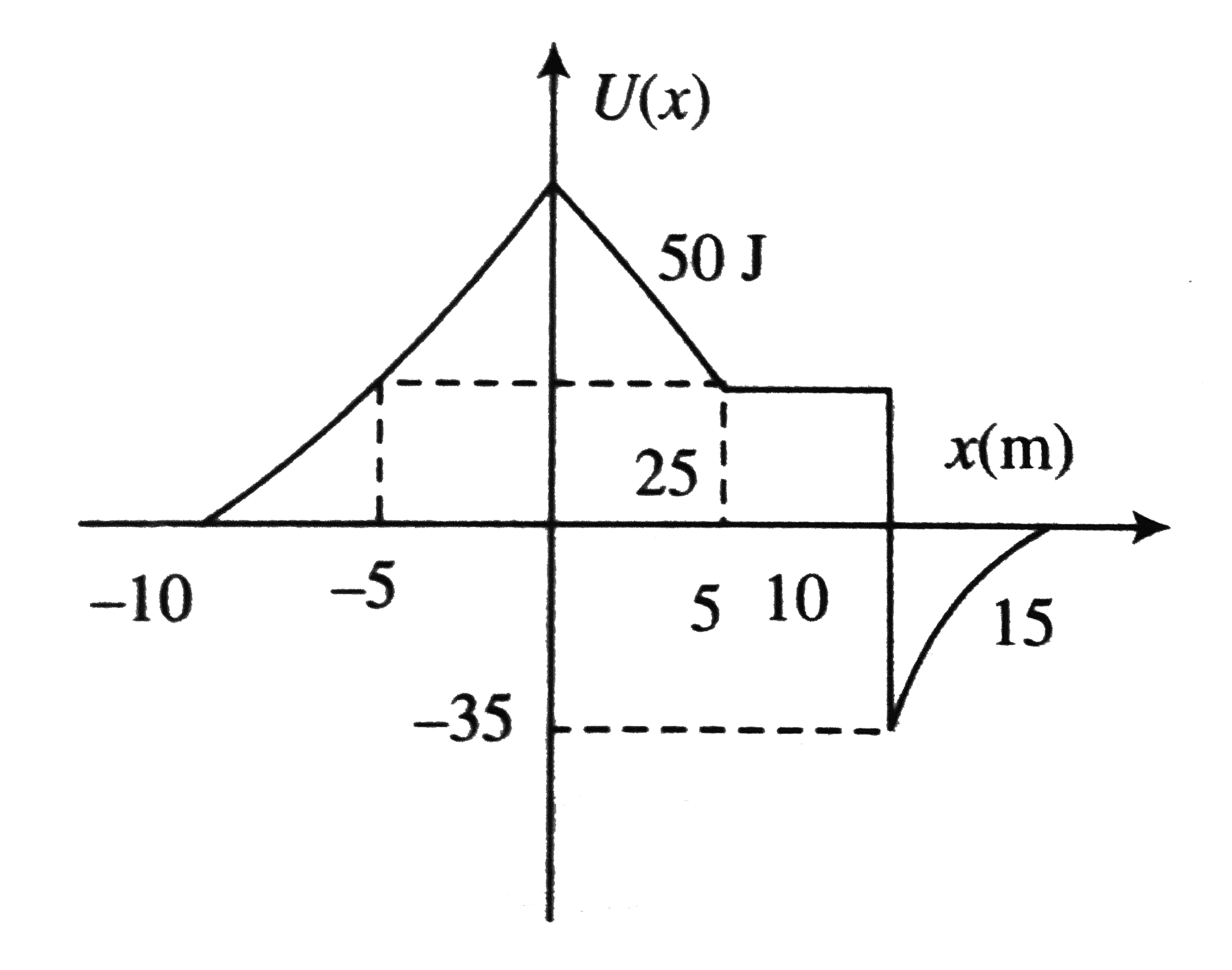Figure shows the variation of potential energy of a particle as a function of x, the x-coordinate of the region. It has been assumed that potential energy depends only on x. For all other values of x, U is zero, i.e., x←10 and x>15, U=0.

If the total mechanical energy of the particle is −40J, then it can be found in region
(a) x←10 and x>15
(b) −10<x←5 and 6<x<15
(c) 10<x<15
(d) It is not possible
The correct Answer is:D
The concept is same as above.
If E=−40J, K=−40−U.
It means U←40 for K to be positive, but from given variations, it is clear that minimum, value of U is −35J. So this is not possible.
Topper's Solved these Questions
- WORK, POWER & ENERGYBOOK - CENGAGE PHYSICSCHAPTER - WORK, POWER & ENERGYEXERCISE - Integer
14 Videos
- WORK, POWER & ENERGYBOOK - CENGAGE PHYSICSCHAPTER - WORK, POWER & ENERGYEXERCISE - Archives (sinble Correct )
19 Videos
- WORK, POWER & ENERGYBOOK - CENGAGE PHYSICSCHAPTER - WORK, POWER & ENERGYEXERCISE - Multiple Correct
25 Videos
- VECTORSBOOK - CENGAGE PHYSICSCHAPTER - VECTORSEXERCISE - Exercise Multiple Correct
5 Videos
Similar Questions
Knowledge Check
The figure shows the variation of potential energy of a particle as a funcation pf x, the x-coordination of the region. It has been assumed that potential energy depends only on x. For all other values x,U is zero. i.e. forx<−10 and x>15,U=0.

If total mechanical energy of the particle is −40J, then it can be found in region.Ax<10 and x>15B−10<x<5 and 6<x<15C10<x<15DIt is not possibleThe figure shows the variation of potential energy of a particle as a funcation pf x, the x-coordination of the region. It has been assumed that potential energy depends only on x. For all other values x,U is zero. i.e. forx<−10 and x>15,U=0.

If total mechanical energy of the particle is 25J, then it can found in the regionA−10<x<−5 and 6<x<15B−10<x<0 and 6<x<10C−5<x<6D−10<x<10Figure shows the variation of potential energy of a particle as a function of x, the x-coordinate of the region. It has been assumed that potential energy depends only on x. For all other values of x, U is zero, i.e., x←10 and x>15, U=0.

If the particle is isolated and its total mechanical energy is 60J, thenA(a) The particle can be found anywhere from −∞<x<∞.B(b) The particle's maximum kinetic energy is 95J.C(c) The particle's kinetic energy is not getting zeroD(d) All of the above
Potential energy of a particle is related to x coordinate by equation x2−2x . Particle will be in stable equilibrium at :
View SolutionThe potential energy of a particle of mass m is given by U=12kx2 for x<0andU=0 for x≥0. If total mechanical energy of the particle is E, is speed at x=√2Ek is
View SolutionThe potential energy of a particle of mass m is given by U=12kx2 for x<0 and U=0 for x≥0. If total mechanical energy of the particle is E. Then its speed at x=√2Ek is
View SolutionThe potential energy of a particle of mass m is given by U=12kx2 for x<0 and U=0 for x≥0. If total mechanical energy of the particle is E. Then its speed at x=√2Ek is
View SolutionThe potential energy of a particle of mass m is given by U=12kx2 for x<0 and U = 0 for x≥0. If total mechanical energy of the particle is E. Then its speed at x=√2Ek is
View Solution

